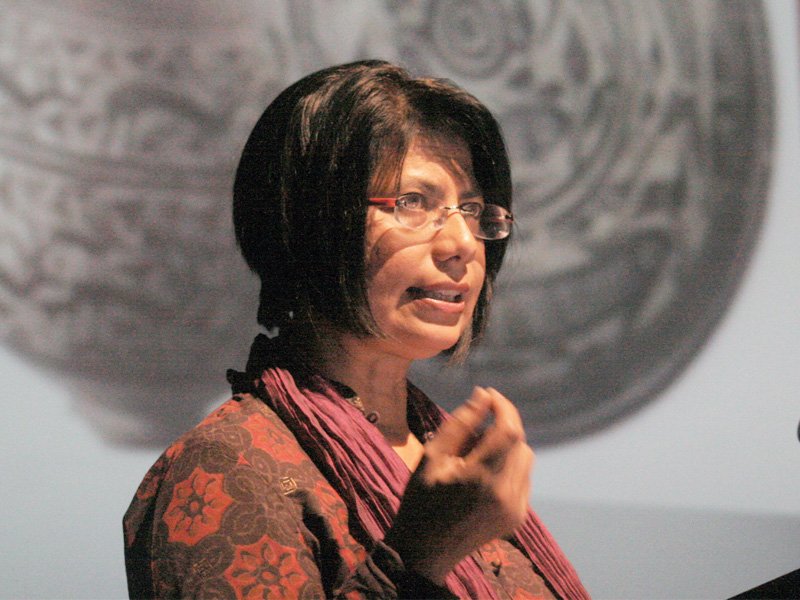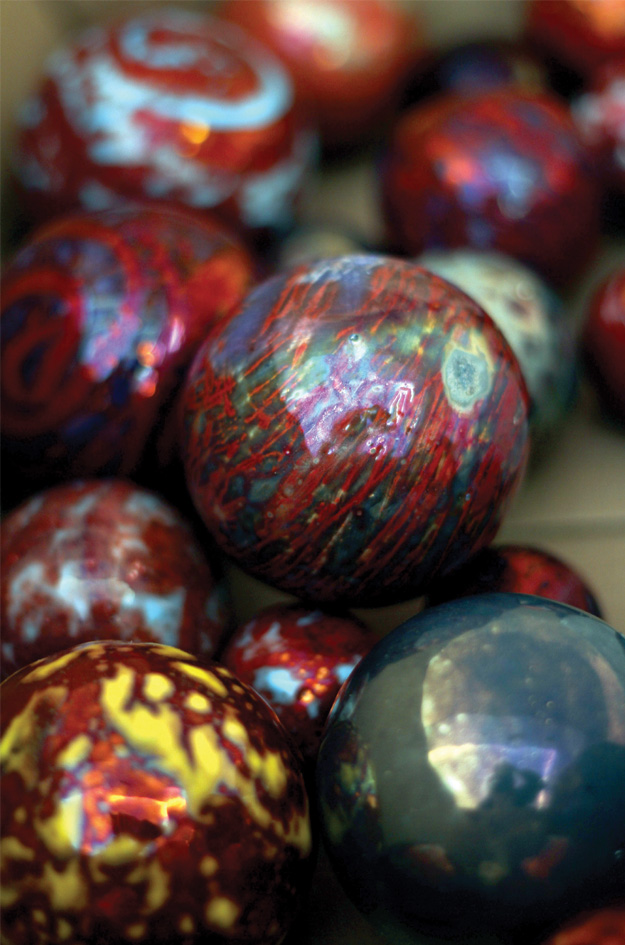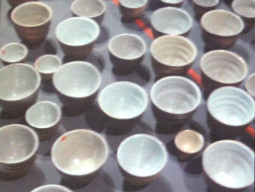
Mankind’s fascination with celestial bodies has left science students with the daunting task of going through textbooks packed to the brim with topics like gravitation and planetary movements.
However, humans’ desire to understand the mystery of the cosmos is not only limited to academics but has also contributed to one of the world’s oldest and most enduring forms of art.
Blue pottery, a term given to decorative tiles as well as ashtrays, vases, coasters, small bowls and boxes that incorporate the colour of a clear sky, also came about because of man’s fascination with space.

At a seminar on Sunday, Kristine Michael, a ceramist and sculptor from India, traced the journey of this distinctive brand of pottery to the subcontinent. Persians, as well as the Turks, have often been credited with inventing this art form. Muslim artisans migrated to Multan, among other areas in present-day India and Pakistan, after the first Persian armies had made their way in the subcontinent, but Mehrgarh and Harappa were two cities where pottery-making activities used to take place even earlier, said Michael.

The art continued to flourish in the later centuries as well, and many master craftsmen settled in Jaipur, which has been dubbed the modern capital of blue pottery. Incidentally, Jaipur itself also goes by the name of the ‘Pink City’.
“The popularity of blue pottery appeared to be particularly in sync with the fortunes of Mughal dynasty. The Sheesh Mahal in Lahore is one example of Mughal-era architecture that employed it,” said the expert. Therefore, once the influence of the dynasty started wearing off, blue pottery also started suffering, said Michael. Polluted raw materials also lowered the quality of the products that employed the technique.
However, the savvy ruler of Jaipur who decided to stay neutral during the mutiny of 1857, must be given credit for saving the art from dying outright, albeit indirectly.
Fast forwarding to in the latter half of the 20th century, Leela Bordia helped the struggling craftsmen who made blue pottery items in Jaipur by encouraging them to tailor their products to the demand of collectors, as well as those who use them for daily purposes, said Michael. The suggestions seemed to have worked, as Bordia went on to form the Neerja International, a company that presently employs over 150 craftsmen in Jaipur.
Published in The Express Tribune, January 14th, 2013.































COMMENTS
Comments are moderated and generally will be posted if they are on-topic and not abusive.
For more information, please see our Comments FAQ